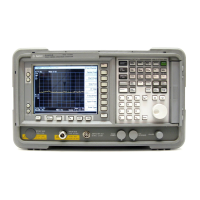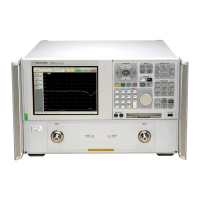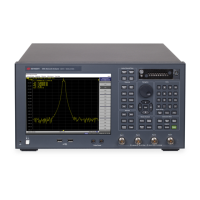4-10 Chapter 4
Making GSM Air Interface Measurements
Making The Transmitter Receive (Rx) Band Spurious Measurement
Making The Transmitter Receive (Rx) Band
Spurious Measurement
Purpose
The receive band spurious measurement checks a transmitter’s receive
band for conformance to the ETSI specification:
NOTE For MS mode, the limits for E-GSM900 and R-GSM900 apply only to
the part of the limit that does not overlap with other bands. The
P-GSM900 limit takes priority for the upper portion followed by
E-GSM900 and then R-GSM900, if appropriate. This means that up to
three limits may be in force at once in MS mode.
Measurement Method
The measurement sweeps in the receive band of the current device and
checks the trace for any spurs which exceed the maximum permissible
transmitter power (shown above in Table 4-1).
Table 4-1 ETSI Specification: Maximum Permissible Measured
Power (dB)
GSM
450
GSM
480
GSM
850
P-GSM
900
E-GSM
900
R-GSM
900
DCS
1800
PCS
1900
MS -67.0 -67.0 -79.0 –79.0 –67.0 –60.0 –71.0 –71.0
BTS –98.0 –98.0 –98.0 –98.0 –98.0 –89.0 –98.0 –98.0
BTS M1 -91.0 -91.0 -91.0 –91.0 –91.0 –91.0 –96.0 –96.0
BTS M2 –86.0 –86.0 –86.0 –86.0 –86.0 –86.0 –91.0 –91.0
BTS M3 -70.0 -70.0 -70.0 –81.0 –81.0 –81.0 –86.0 –86.0
PBTS M1 –70.0 –70.0 –70.0 –70.0 –70.0 –70.0 –80.0 –80.0

